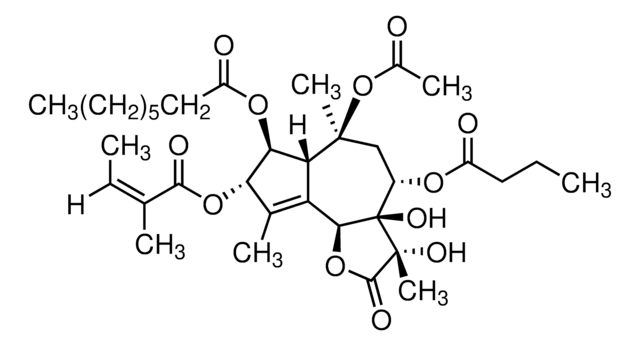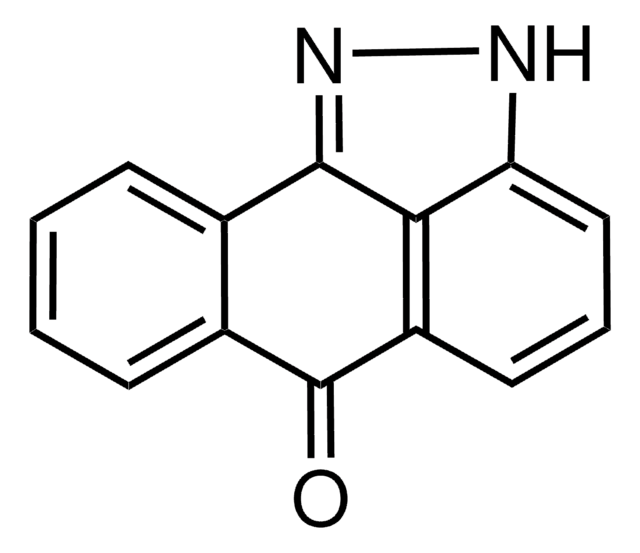S5696
SKI II
≥98% (HPLC), solid
Synonyme(s) :
4-[[4-(4-Chlorophenyl)-2-thiazolyl]amino]phenol
About This Item
Produits recommandés
Essai
≥98% (HPLC)
Forme
solid
Conditions de stockage
protect from light
Couleur
off-white
Solubilité
DMSO: ≥20 mg/mL
Température de stockage
2-8°C
Chaîne SMILES
Oc1ccc(Nc2nc(cs2)-c3ccc(Cl)cc3)cc1
InChI
1S/C15H11ClN2OS/c16-11-3-1-10(2-4-11)14-9-20-15(18-14)17-12-5-7-13(19)8-6-12/h1-9,19H,(H,17,18)
Clé InChI
ZFGXZJKLOFCECI-UHFFFAOYSA-N
Catégories apparentées
Application
Actions biochimiques/physiologiques
Caractéristiques et avantages
Autres remarques
Code de la classe de stockage
11 - Combustible Solids
Classe de danger pour l'eau (WGK)
WGK 3
Point d'éclair (°F)
Not applicable
Point d'éclair (°C)
Not applicable
Équipement de protection individuelle
Eyeshields, Gloves, type N95 (US)
Faites votre choix parmi les versions les plus récentes :
Déjà en possession de ce produit ?
Retrouvez la documentation relative aux produits que vous avez récemment achetés dans la Bibliothèque de documents.
Notre équipe de scientifiques dispose d'une expérience dans tous les secteurs de la recherche, notamment en sciences de la vie, science des matériaux, synthèse chimique, chromatographie, analyse et dans de nombreux autres domaines..
Contacter notre Service technique




